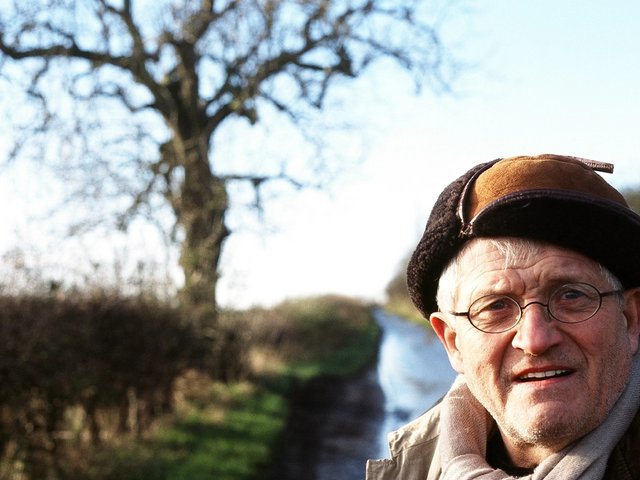Milestone Films of New Jersey specialise in restoring and rereleasing lost classics. Two recent DVD issues present very different histories of artists and their art.
The first is to be found as an extra with “Araya”, Margot Benacerraf’s striking depiction of a subsistence community on the northeastern coast of Venezuela. “Araya”, which took honours at Cannes in 1959, is worth seeing in its own right; however, it is Benacerraf’s first film, made in 1952, also on the disc, that gives a rare insight into the hermitic later life of Venezuelan artist Armando Reverón (1889-1954). As a young man Reverón (also the film’s title) studied in Paris, Barcelona and Madrid, but only began to make a name for himself back in Venezuela after returning in 1915, making ethereal figurative and landscape paintings, first using mainly blue pigments, then shades of off white, and later more sepia tones. In the early-1920s he moved to the coast and constructed what he called his “Castillete” (little castle) where he would live for the rest of his life. In this crudely constructed space he cast aside an engagement with society to concentrate solely on painting. Suffering a number of breakdowns, his life in the “Castillete” became ever stranger, eventually involving sharing his space with garish mannequins that he used as models for his later work. It is in this state that Benacerraf finds him, two years before his death, a shambling figure surrounded by mirrors and bric-a-brac. While the biographical details and critique that form much of the short film now seem dated, the scenes of Reverón’s life in his primitive dwelling are haunting and disturbing, giving no suggestion that this is an artist whose work can regularly fetch six-figure sums at auction today.
David Hockney and Philip Haas’ 1988 film “A Day on the Grand Canal with the Emperor of China”, one of the first releases in the Milestone-on-demand series (ie, you pay for it, we’ll make a copy for you), sees Hockney comparing and contrasting the perspective and narrative employed in the construction of the Chinese scroll The Kangxi Emperor’s Southern Inspection Tour (1691-98), Scroll Seven, painted around 1698 by Wang Hui and his assistants. Hockney’s examination of the work, contrasted with Canaletto’s Capriccio: Plaza San Marco Looking South and West, 1763, and a later Chinese scroll painted after Western missionaries had arrived in China, is gripping, rather like a more avuncular version of John Berger in “Ways of Seeing” (a phrase also used by Hockney to describe the differing perspectives employed in the scrolls and the Canaletto). He posits the argument that, in post-Renaissance perspective “if the infinite is God, [the observer] and [the vanishing point] will never connect, they will never meet each other”, whereas with lines of perspective fanning out from the observer, as with the earlier scroll, “infinity is everywhere, including the viewer. God is everywhere, including the viewer. It seems to make more theological sense…” Hockney even suggests that the decline of the Chinese empire and the rise of Western imperialism can be traced to the geometric connection between the Western vanishing point and the triangulation necessary to accurately aim heavy weaponry. “There is a great connection between the way we depict space and the way we behave in it,” he says. So convincing is Hockney that it’s only after watching the film that one realises that such speculation contains some heavy duty generalisation that doesn’t bear up to scrutiny. No matter. His descriptions of the detail of the scrolls are charming and it’s a treat to be (albeit temporarily) convinced with such style.
How we behave in space was also central to a special edition of BBC Radio 4’s Front Row strand that went out at the end of April. “Andy Warhol’s Last Trip to London” brought together several people who were engaged with Warhol in the summer of 1986 when he came for an exhibition of self portraits at the Anthony d’Offay gallery. While D’Offay explained the risk he took in buying all Warhol’s paintings up front, and TV producer Kim Evans described the hoops she had to jump through to secure a South Bank Show interview, it was artist Jeremy Deller, then a teenage art history student, who had the most revealing insights into the lives of Warhol and his entourage. After gatecrashing D’Offay’s opening night party, Deller secured an invite from a Warhol acolyte to hang out with Andy and his friends in their suite at the Ritz. Deller and an accompanying friend found them watching “Benny Hill” on TV with the sound turned down, while listening to Roxy Music’s greatest hits. On the Radio 4 programme the conversation then went as follows:
Jeremy Deller: “We were the dancing girls.”
Anthony d’Offay: “He was extremely shy about what was worrying you.”
J.D: “Having said that, he did grope me…”
John Wilson (presenter): “Your bum?”
J.D: “No… [but] I took it as a massive compliment. I’m not gay but I thought ‘thank you’.”
For Deller the encounter changed everything: “I think I was ruined after that. After that I thought art history is not that interesting… It made me totally reassess what I wanted to do with my life.” Warhol was dead six months later. Jeremy Deller won the Turner Prize in 2004. n
o Details of all Milestone releases can be found at www.milestonefilms.com
o At time of writing, the Front Row special, “Andy Warhol's Last Trip to London”, presented by John Wilson and produced by John Goudie, could be heard again (the BBC vary how long they keep programmes online) at www.bbc.co.uk/programmes/b010m2kc.html
o A biographical film of Armando Reverón’s life, also titled Reverón, has just been released in Venezuela.
Originally appeared in The Art Newspaper as 'The hermit, the theologian and the groper'



